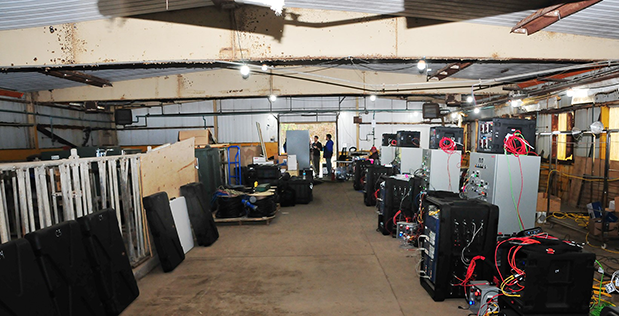DARPA Develops Technologies To Quickly Restore US Power Grid
One of the greatest nightmares for American civilian and defense planners would be the loss of the US power grid. Reportedly, both Chinese and Russian hackers now have the capability to do so, never mind the possibility of a nuclear weapon being airburst in a desperate bid to “deescalate through escalation” creating an nuclear electromagnetic pulse that could knock out power infrastructure. Princeton professor Michael O’Hanlon explores this threat as part of a breakout of initially limited fighting with Russia or China in one of his books:
“Such a result could badly incapacitate many of the Defense Department systems in the United States that require civilian-produced electricity to function. Even if such a system could be restored quickly, the US electrical system as a whole might remain damaged for many months, as might national infrastructure needed to deploy military forces abroad. Whether the United States could muster a major military response at a time when its national capacities were needed to take care of the many Americans left in the cold and dark, without medicine or sanitation and clean water or viable living quarters, is an open question.”
Back in 2016, DARPA created its Rapid Attack Detection, Isolation and Characterization Systems (RADICS) program with the goal of developing the capability to quickly restore a partly or even fully disabled power gird. On Tuesday, the agency reported that after four years of work it has results.
Some of the newly developed tools allow one to pinpoint the exact nature of the attack before responding. The RADICS program manager explained that a cyberattack could target the grid in two basic ways: “make the grid not tell you the truth, and make the grid operate in an unexpected way”. Besides enhancing situational awareness, there are also tools for countering threats more directly allowing one to better detect, counter and isolate malware.

Much of the program’s testing involved a custom testbed built to replicate real power grid conditions built and run in collaboration with the University of Illinois Urbana-Champaign (UIUC). Tim Yardley, a principal investigator responsible for the testbed effort at UIUC, explained that:
“Testbeds are more than just hardware and software; they are the people, the knowledge, the data, and the assets that are necessary to build out an environment to serve the designed purpose. The RADICS testbed provided a state-of-the-art environment to explore the unknown, test theories and approaches, and accomplish what has never been tried before – live-fire cyberattacks on critical infrastructure systems in a controlled and observable way.”
RADICS isn’t done however. Despite its progress, it still has a long way to go. According to DARPA: “today, first responders lack ways of interfacing with infected devices, understanding what these devices are doing under malicious influence, and ultimately applying a fix.”
Other DARPA programs will likely contribute to the RADICS effort such as the Guaranteed Architectures for Physical Security (GAPS) project which seeks to allow networks without direct connection to the greater internet or the System Security Integration Through Hardware and Firmware (SSITH) program which is looking to defend against hardware attacks hoping to exploit software weaknesses.

